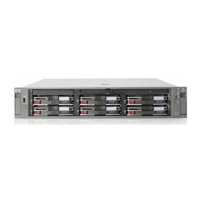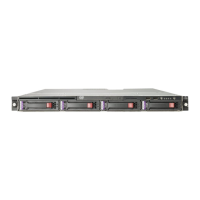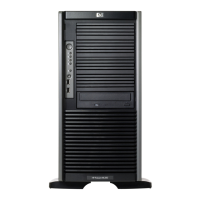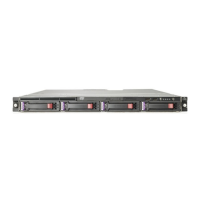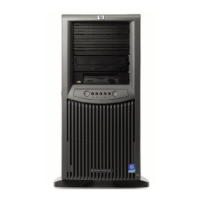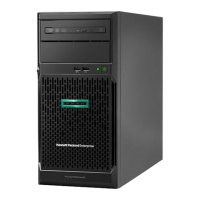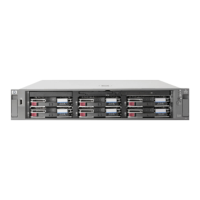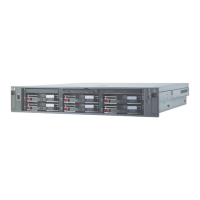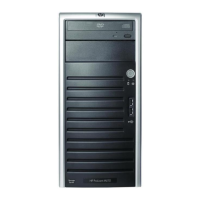
Do you have a question about the HP ProLiant ML110 G5 and is the answer not in the manual?
| Form Factor | Tower |
|---|---|
| Processor Speed | Up to 3.0 GHz |
| Chipset | Intel 3200 |
| Memory | Up to 8 GB DDR2 |
| Processor | Intel Xeon 3000 series |
| Drive Bays | 4 x 3.5" |
| RAID Support | RAID 0, 1 |
| Network Interface | 1 x Gigabit Ethernet |
| Expansion Slots | 2 x PCI |
| Operating System Support | Windows Server, Red Hat Linux, SUSE Linux |
Explains formatting and symbols used in the guide.
Guidelines for safe rack installation to prevent tipping.
Key decisions needed before installing the HP ProLiant Storage Server.
Choosing how to connect to the server based on network configuration.
Steps to power on the server and initiate the installation process.
Methods to connect to and manage the server's console.
Steps to configure network settings using the Rapid Startup Wizard.
Identifies front and rear panel components of the ML110 G5 server.
Identifies front and rear panel components of the DL160 G5 server.
Identifies front and rear panel components of the DL380 G5 server.
Identifies front and rear panel components of the DL585 G2 server.
Explains the status indicators for SAS/SATA hard drives.
Describes the lowest level of storage management at the physical drive level.
Explains how physical drives are combined into logical units called arrays.
Discusses protecting data from drive failures, recommending RAID 5.
Discusses growth limits and RAID levels for dynamic disk volumes.
Explains the infrastructure for creating point-in-time snapshots of volumes.
A system utility for managing disks, volumes, and partitions.
How to track and control disk space usage by users.
Steps to add physical disks to an array and increase logical drive capacity.
Functionality for creating point-in-time snapshots of volumes.
Scenarios requiring file or folder recovery using shadow copies.
Procedures for setting up and managing file shares and folders.
Securing files using Windows Explorer for permissions.
Checklist for configuring the print server effectively.
Practical advice for managing print devices and servers.
Integrates Windows and UNIX user accounts for simplified administration.
How a Windows server acts as an NFS server for mixed environments.
Troubleshooting common issues with Microsoft Services for NFS.
Using the applet for remote administration from non-Microsoft computers.
Feature for managing iSCSI targets, virtual disks, and snapshots.
Guide to scheduling snapshots of virtual disks.
Using iSCSI Software Target for shared storage in a cluster.
Details how resources failover to other nodes and can be moved back manually.
The shared disk used for cluster state coordination and data integrity.
Requirements for successful cluster implementation.
Sophisticated networking arrangements for clusters, including domain requirements.
Procedures for shutting down, rebooting, and presenting storage during installation.
Ensuring all nodes are members of the same domain.
HP recommendations for Quorum disk configuration and placement.
Steps to create a cluster, including hardware/software verification.
Procedure for adding new nodes to an existing cluster.
Managing share permissions using Cluster Administrator for migration.
Critical steps for safely shutting down the entire cluster.
Critical steps for safely powering up the cluster.
Using HP support resources for troubleshooting server issues.
Information on maintaining and servicing the storage server.
Using the DVD to install or recover from failures.
Steps to restore the server to its factory default state.
Steps to reassign drive letters after system restoration.
Methods for configuring an Internet connection for the server.
FCC rules regarding RF emission limits and device classification.
General safety guidelines and precautions for using the equipment.
